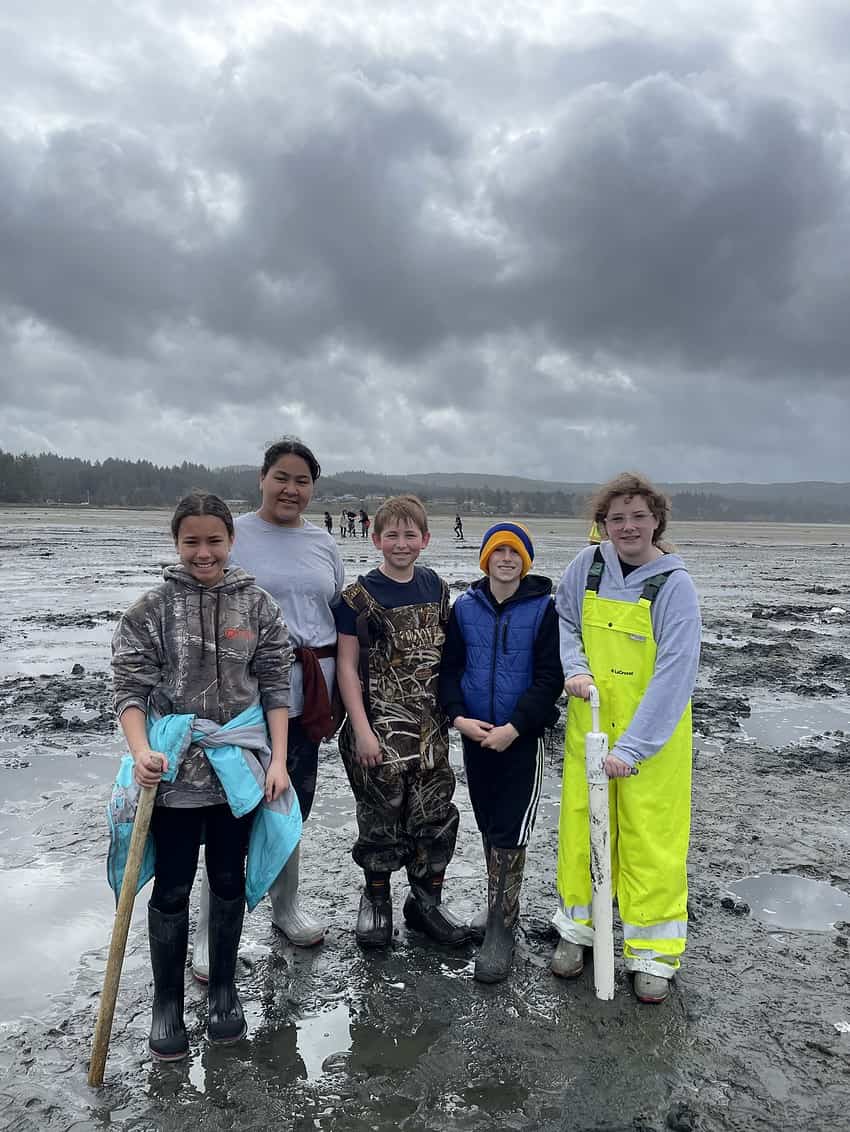Story, Photos & Video By Ashley Hamann, Tillamook County Pioneer Intern
Netarts Bay is a gorgeous place that many Tillamook County locals go when the clamming tides are good. As fun as clamming is, it can also teach us much about marine wildlife, the ecosystem, and so much more. This is about what the students of East Elementary School learned on April 21st.
The Fifth Grade Shellfish and Anthropology Program is an event that has been held by Netarts Bay Watershed Estuaries Beach and Sea (WEBS) for the past eight years. Originally, member Clair Thomas started this program to help educate Tillamook youth in the marine sciences. As he is now recently retired from his position as the Natural Resources Coordinator for Tillamook School District, Amy Schmid has now taken the position and is continuing the fun.
Before the volunteers, teachers, and students show up at Netarts Bay, the students spend several days watching videos and talking in class about how to clam and how to identify the different species. This means that when they get to the bay they are able to apply this knowledge on the spot and identify the clams they are digging up. These trainings are also beneficial to the high school students who participate as they are able to learn more about the marine sciences by participating.
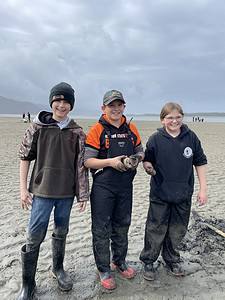
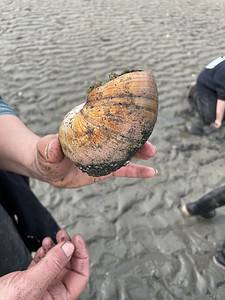
The buses roll in at nine with seats full of eager students. Within thirty minutes Environmental Education Coordinator at Tillamook Estuaries Partnership Rachel Freeman had dubbed the students “clam biologists” and the three classes started the hunt for the shellfish. For the next two hours, the kids spent time in small groups led by high school students where they dug up clams and then recorded data on the size of the clam, environment they were found in, and on the species. Some people were even able to mark down the moonsnail on their papers. Everyone would then use the data they collected to graph how these factors affect each other and would help them find clams in the future. After many laughs and sand all over the kids, everyone came back from the bay as the tide started to rise and went off to get lunch.
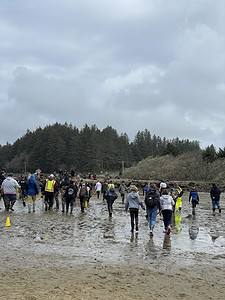
After students and volunteers alike enjoyed a break from the cold waters of the bay and ate some food, it was time for some serious learning. The three classes settled in alongside the bay at different stations. At one, Rachel Freeman was hard at work teaching the kids about fossils, tectonic plates, and the creation of sedimentary rock. The students then spent time with chisels and hammers trying to find fossils and they made some of their own out of clay.
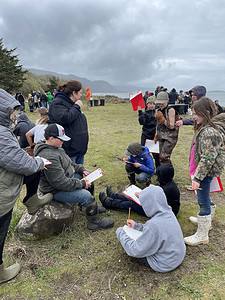
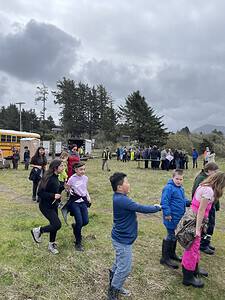
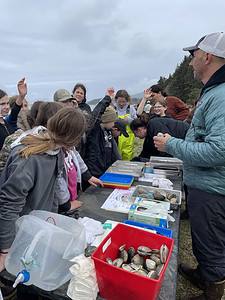
At another station, Tillamook High School science teacher Slade Sapora led a workshop on the anatomy of clams where he discussed how they live in correspondence to their anatomy. After this lesson, students were able to pair off and dissect their own clams and explore their curiosity about them.
Students also spent time learning about how clams help with the water clarity in Netarts Bay through lessons on turbidity. Students went through the scientific process of trial and error while testing water samples to see the amount of particles dirtying the samples.
Arguably the most important station that students rotated to was the graphing station. Here the students learned how to graph the information they collected while clamming so they could figure out how location, depth of holes, size of clams, and species, change based on one another. Then, they were able to draw up a hypothesis on how to find clams better.
Overall, the event was successful and students learned much about their environment, marine sciences, anthropology, and the scientific process. Both WEBS and TEP are excited to continue environmental education for elementary students through doing this event and others in the future.
For more about Netarts Bay WEBS programs, www.netartsbaywebs.org and about Tillamook Estuaries Partnership www.tbnep.org

